FishNet-USA/An East Coast Perspective on Coronavirus Impacts
Jun 26, 2020
New Jersey Fishing Industry: Coping with coronavirus impacts
This was initially to be about how the New Jersey commercial fishing industry was coping with the coronavirus crisis. However, there is a seemingly infinite number of websites running commentaries on the national and/or international aspects of the ongoing pandemic in general and, surprisingly, as it specifically applies to and as it affects commercial fishing and the seafood industry. Considering this, sharing more than an overview of what the New Jersey industry, or at least that part of it that I have been in touch with, would probably not have much of an impact. But happily, at this point it seems that U.S. consumers aren’t really as averse to preparing quality seafood at home (when it isn’t available or is only limitedly available elsewhere) as most of us have believed.
I realize that it’s going to be difficult to avoid all of the doom and gloom that has permeated both national and international news cycles over most of the last four months, particularly considering the recent dramatic upswing in new coronavirus cases, without appearing at least a little bit Pollyannaish, but there are a few bright spots in New Jersey that I think merit some attention (and I’m sure, elsewhere as well, because if there’s one thing that characterizes fishermen today, it’s their resilience and their adaptability.
And it’s adaptability that is really needed during the huge seafood marketing disruptions that continue to be part and parcel of local, state and federal governmental edicts and/or recommendations that are having devastating effects on the national restaurant industry as well as an increasing public acceptance of the fact that we all need to make drastic changes in our day to day activities. During normal times up to three-quarters of the fresh seafood landed in U.S. ports ends up in restaurants. Seemingly overnight a huge part of the domestic fresh seafood market disappeared.
We definitely don’t need another voice adding to what many – if not most – folks consider a crisis in the industry. However, what is lacking – at least as far as my recent web wanderings go – is a detailed listing of what the people in various fisheries are doing to get through what we’re all hoping is a temporary interruption in the domestic fishing industry’s “business as usual.” I’m not particularly well-versed in what changes in catching, transporting, processing, storing or selling are being instituted in the hundreds of distinct fisheries that comprise the our fish and seafood industry, but I thought it might be of interest to readers to get an idea of what’s going on in New Jersey.
Fortunately the three major fishing ports in the northern half of the New Jersey coastline are associated with “in-house” (really on-site) seafood markets (see Kirk Moore’s National Fisherman article One month into coronavirus shutdowns, New Jersey fishermen search for new customers at https://tinyurl.com/yavnmtdw) which are continuing – and increasing – their out-the-door sales and are increasing their customer base by offering periodic pop-up fresh markets (see APP.com’s photo essay Shore Fresh Seafood Market sells fish in the age of coronavirus at https://tinyurl.com/y9rq3tld), curb-side pickup and reserved sales (see Maria Scandales The Sandpaper article Seafood Snapped Up Locally for Holiday, But Scaled-Back Restaurants Still Hurt at https://tinyurl.com/y7ntz5dy). And Richard Brecka, owner of Shorefresh Seafood at the Fishermen’s Dock Co-op in Point Pleasant and the Co-op and other industry members are working with local FM station WOBM 92.7 to present (local) seafood cooking segments in the morning talk show.
These efforts, and others in ports up and down the U.S. coastline, are bringing in dollars when those dollars are really needed, but they are performing another important function as well. They are allowing boats and fishermen to keep on working, even if they’re working at a reduced level. As I’ve written before, once we’ve lost necessary coastal infrastructure, replacing it is in instances is going to be a struggle and in many others might well be impossible.
A couple of months back I reported in Bycatch – From problem to opportunity (https://tinyurl.com/y9nur52x) on the seafood gleaning program that Point Pleasant fisherman Brick Wenzel had organized which brought together NJ harvesters, dock operators and processors to provide bycatch which would otherwise be wasted to grateful recipients at food banks, food pantries and soup kitchens. In the current economic climate it’s hard to see this concept not expanding, and it’s a natural for generating some sorely needed goodwill for commercial fishing and commercial fishermen. But it’s not going to pay many bills.
And a related effort from Ray Hilborn’s group at the University of Washington
Apropos this discussion, our friends at Ray Hilborn’s Sustainable Fisheries program at the University of Washington, along with their immeasurably valuable work in setting the public record on seafood sustainability straight, have added an interactive world map of off-the-boat fresh seafood suppliers. The list of suppliers can be sorted by their delivery range, going from “National” down through “Regional” and “Local” all the way to “Pickup only.” If any of these categories apply to you it would definitely be worth the effort it would take to have your business listed on the map.
Ready or not, the seafood industry will be forced to shift to a web-based business model, with increased focus on direct sales. It is evident that the most resilient seafood suppliers will be the ones that are able to adapt to this new way of doing business. Even when restaurants do open up, reduced seating capacity and new social-distancing guidelines will continue to impact the industry long after shelter-in-place orders are lifted. (Managing Editor and Developer at Sustainable Fisheries UW, Max) Mossler is hopeful that this tool will grow to benefit as many businesses as possible: “We’re hoping that going forward businesses will reach out to us about getting on the map.” (Simke, A. New Map Launching Today Helps People Find Local Seafood. Forbes. 05/27/2020. https://tinyurl.com/yagkfrbt)
There are some minimum requirements for listing, but they are basic to moving seafood via the internet, and at this point it’s pretty obvious that this is going to be a requisite part of any successful seafood business plan for the foreseeable future, so you might as well get involved ASAP. I’ve been in touch with Max, and he is anxious to expand the list of businesses. His email address is [email protected]. He has very generously volunteered to talk to any fisherman regarding how to set up a website or online store. Contact him via email.
And then there’s coping – or trying to cope – with totally out-of-touch bureaucrats
Another issue just surfaced (https://www.fisheries.noaa.gov/bulletin/temporary-waivers-northeast-observers-monitors-through-june-30-resuming-coverage-july) which is undoubtedly weighing heavily on the minds of many fishing vessel owners, operators and crew; that of the presence of mandatory on-board inspectors and observers during the Coronavirus pandemic.
The cramped and crowded working and living quarters on virtually every commercial fishing vessel is no place for the forced introduction of a stranger who might be an asymptomatic covid-19 vector (do a web search on “covid-19 symptoms). And making a complicated situation even more complicated, along with a handful of tests of questionable efficacy, symptoms of covid-19 can take up to two weeks after exposure to appear. How would you like to share limited accommodations – think of four people in a really small motel room or a large closet – with someone who you don’t know and who you know nothing about beyond the fact that she or he is working under “a deployment plan that includes safety protocols and requirements” and that the bureaucrats at NOAA/NMFS are “encouraging them to use common practices.”
The common practices that the observer contractors are being encouraged to adhere to:
- Training observers on COVID-19 awareness and risk mitigation
- Deploying individuals to the same vessel(s) and ports as much as possible
- Minimizing observer travel among vessels, ports, and states
- Pre-trip health screening for observers
- 14-day self-isolation prior to first deployment
- Personal protective equipment requirements
- Temperature monitoring prior to and throughout deployment
- Protocols for detecting, reporting, and acting on COVID-19 symptoms at home and at sea
- Vessel COVID-19 assessment pre-screening questions
Let me draw your attention to the profusion of weasel words* in the above list. These include “training on…,” “deploying… as much as possible,” “minimizing observer travel…,” “prior to first deployment…,” “protocols for detecting…” and “vessel COVID-19 assessment pre-screening questions.” Feel kind of like campaign promises don’t they? Or to quote Shakespeare, “full of sound and fury, signifying nothing.”
*According to Wikipedia “a weasel word is an informal term for words and phrases aimed at creating an impression that something specific and meaningful has been said, when in fact only a vague or ambiguous claim has been communicated.”
How many well-trained and prudent health care professionals have contracted – and possibly spread – covid-19 under rigorously controlled conditions on and off the job (and please don’t take this as a criticism of the folks who are the real and too often unsung heroes of this pandemic)? How many untrained but potentially equally prudent people, people from every walk of life, from every socioeconomic strata, of every age and in every state have contracted the same disease, and how many of the people from whom and under what circumstances they contracted the disease have been identified? But the bureaucrats at NOAA/NMFS are confident that they can protect the health of fishermen (and their relatives) by having their own observers or those employed by private contractors “adhere” to what is little more than a handful of platitudes?
The people at NOAA/NMFS have decided to reinstate observer requirements on fishing vessels in the Greater Atlantic region after a much too brief hiatus (this is a particularly questionable decision considering the recent resurgence of new cases of covid-19. Here in Florida we’re setting records for new cases every day, and for sure that’s not because of new/better testing).
From the above linked NOAA announcement re bringing them back, “observers and at-sea monitors are an essential component of commercial fishing operations and provide critical information that is necessary to keep fisheries open and to provide sustainable seafood to our nation.”
It seems that in the NOAA/NMFS offices in Silver Spring, MD and Gloucester, MA the health and well-being of the fishermen (and their families) from North Carolina to Maine isn’t considered as “essential” as their concern with the health and well-being of the critters that they and their agency are supposed to be managing.
What are they thinking?


































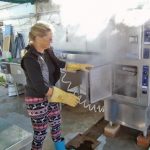

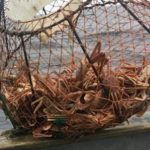
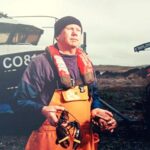
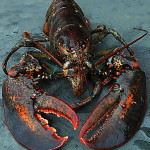
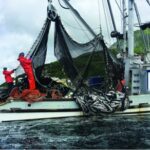
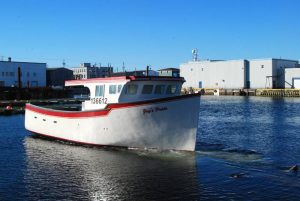
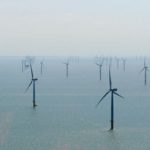
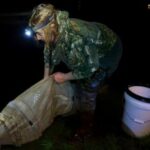
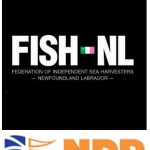
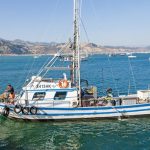
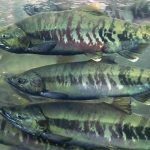



Leave a Reply